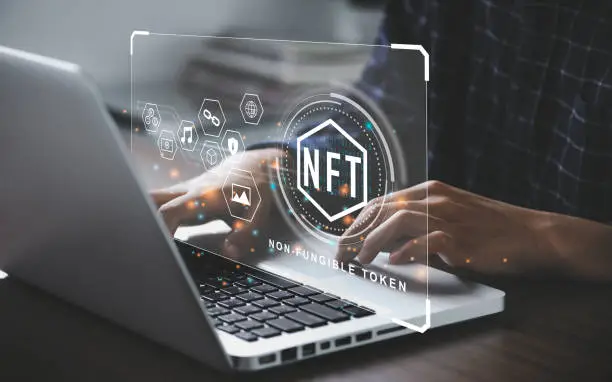
Table of Contents
Non-Fungible Tokens (NFTs) have stormed the digital space, providing a new method of expressing ownership of one-of-a-kind digital and physical assets. Based on blockchain technology, NFTs have transformed various sectors like art, gaming, music, and real estate. This article discusses the basics of NFTs, their applications, advantages, disadvantages, and potential future.
Non-Fungible Tokens (NFTs): The Digital Asset Revolution
What Are NFTs?
NFTs are one-of-a-kind digital tokens that symbolize the ownership of a particular asset. Unlike cryptocurrencies like Bitcoin and Ethereum, which are fungible and interchangeable with each other, NFTs are indivisible and unique from each other. They are normally developed on blockchain networks like Ethereum, utilizing standards like ERC-721 and ERC-1155.
How NFTs Work?
- NFTs operate based on blockchain technology to ensure ownership and authenticity. Here’s how they work:
- Creation (Minting): Digital assets are tokenized and stored on the blockchain.
- Storage: Metadata such as images, videos, or music is stored on decentralized networks such as IPFS.
- Ownership Verification: Smart contracts guarantee that each NFT is unique and cannot be replicated.
- Trading and Transfers: NFTs can be sold, purchased, or transferred on marketplaces such as OpenSea, Rarible, and LooksRare. Also, you can earn money with the data entery because its also one of the best online work in industry.

Use Cases of NFTs
NFTs find numerous uses across various industries such as:
- Digital Art: Artists are able to tokenize their artwork and sell it as NFTs, guaranteeing provenance and royalties.
- Gaming: Virtual assets like skins, guns, and characters are owned and traded in the form of NFTs.
- Music & Entertainment: Artists and content creators leverage NFTs to sell unique albums, concert tickets, and experiences.
- Real Estate: NFTs are utilized to sell virtual land in metaverse ventures such as Decentraland and The Sandbox.
- Collectibles: Cryptographic collectibles, like NBA Top Shot and CryptoPunks, have exploded in popularity.
- Identity & Certification: NFTs can confirm identity, educational qualifications, and intellectual property ownership. Also, you can earn money with the transcription job because its one of the easy way to make money online.

Advantages of NFTs:
NFTs bring numerous benefits, such as:
- Ownership & Provenance: Blockchain provides transparent proof of ownership.
- Decentralization: Intermediaries are eliminated from transactions, minimizing fraud.
- Programmability: Smart contracts allow automatic royalties and revenue sharing.
- Scarcity & Value: Restricted supply and exclusivity create demand.
- Interoperability: NFTs can be utilized across platforms and applications.
Challenges and Risks:
- The challenges come with NFTs despite their potential:
- Environmental Concerns: Blockchain transactions, particularly on Ethereum, use vast amounts of energy.
- Market Volatility: Prices for NFTs change wildly.
- Scams & Fraud: Phishing and fake NFTs are dangers to investors.
- Copyright Issues: Possession of an NFT does not necessarily confer rights to the underlying asset.
- Regulatory Uncertainty: Governments are in the process of setting up frameworks for NFT taxation and legality.
The Future of NFTs
The NFT ecosystem keeps advancing with developments like:
- Layer 2 Scaling Solutions: Reducing transaction costs and enhancing sustainability.
- NFT Utility Expansion: Merging NFTs with DeFi, gaming, and virtual economies.
- Mainstream Adoption: Major brands and companies venturing into the NFT ecosystem.
- Regulatory Clarity: Improved legal frameworks to safeguard investors and creators.
- Metaverse Integration: NFTs will be central to digital identity and ownership in the metaverse.
Conclusion
NFTs have revolutionized digital ownership and asset management, creating new possibilities for creators, investors, and companies. Although there are challenges, the ongoing adoption and technological innovation in the sector indicate a bright future for NFTs as a pillar of the digital economy.